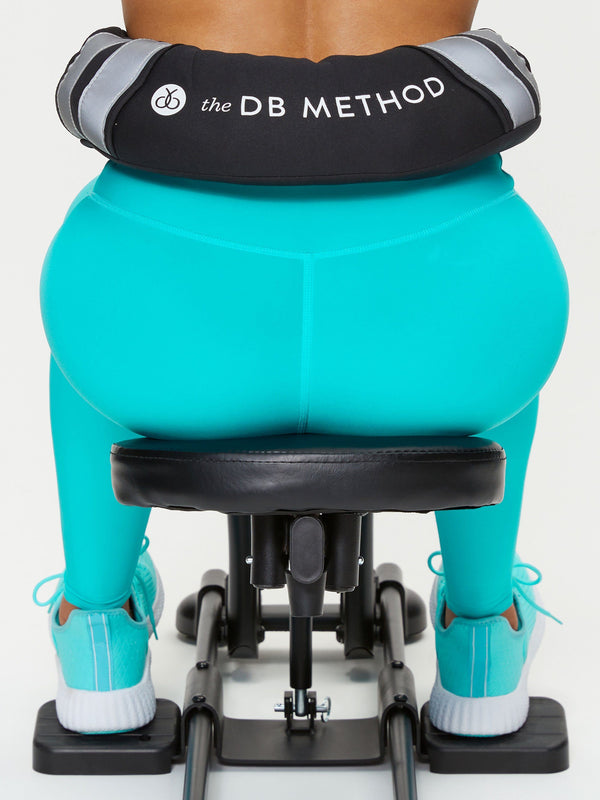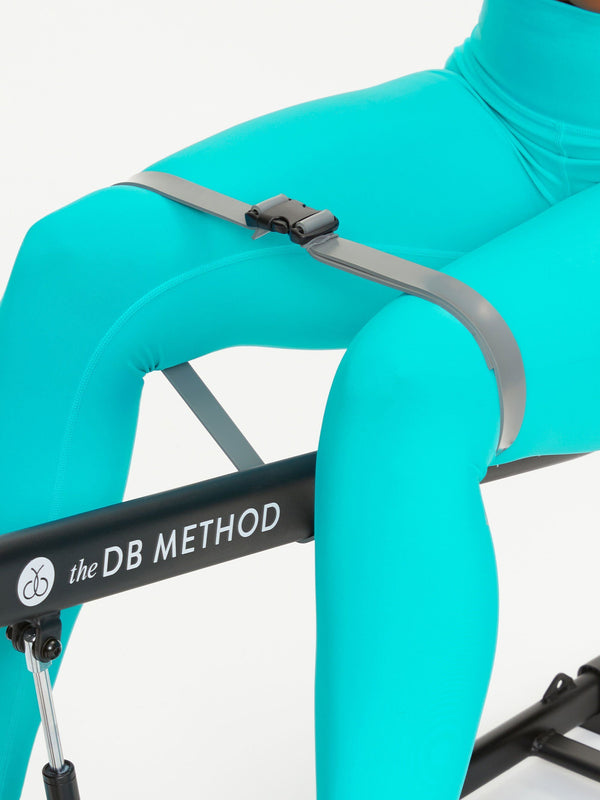After sitting all day, your hips and lower back can feel tight, too. It isn’t just about standing up straight; it’s about finding a real balance. Your posture and your glutes tend to bear the brunt more than you expect.
When you spend long desk hours, your lower back and shoulders end up doing all the work. That’s where posture correction starts, by getting your glutes back in the game. In this blog, we’ll cover a quick desk reset, a three-session weekly plan, and how to bring consistency home.
The Sitting Problem: Tight vs. Weak
Most posture problems don’t come from “bad sitting,” but from too much sitting in a sedentary lifestyle. When you sit all day, some muscles overwork while others switch off. The hips and chest tighten while the glutes and core go quiet. Your posture starts to cave in.
Over time, your glutes can even get less blood flow, making it harder for them to support you. The real fix isn’t merely “sit up straighter.” It’s moving more and strengthening smarter. Short posture breaks and targeted glute work do more for posture correction than endless adjusting.
Why Glutes Matter for Your Posture
Your glutes actually do a lot more than fill out jeans; they’re part of your built-in posture support. When they’re strong, your hips stay steady, your back feels lighter, and long sitting days don’t hit as hard.
Strengthening your glutes and core can help with back pain outcomes. Try bridges, clamshells, or side leg lifts, just a few reps, 2-3 times a week. These moves are simple, quick, and gentle on the body. You’ll honestly feel the difference right away in the best way possible, like the body suddenly realizes how it’s meant to stand.
10-Minute Desk Reset (No Equipment)
Here are quick exercises for a sitting posture reset you can sneak in between meetings. Do two rounds of these moves:
- Wall slides (×10): Open the chest and remind the body what good posture feels like.
- Scap squeezes (×10): Pinch your shoulder blades together to wake up the upper back.
- Seated hip hinges (×8): Push your hips back and keep the spine long.
- Supported cat-cows (×6): Loosen your spine and shake off desk stiffness.
- Standing glute squeezes (×10, hold 2 seconds): Fire up your glutes; they’ve been napping.
Breathe out as you move, stay tall, and treat it like a quick reset before the next task.
Your Weekly Plan: 3 Focused Sessions

With three quick sessions a week of about twenty minutes, you can do wonders. By showing genuine consistency, you’ll see real progress in no time. This plan supports posture correction and offers gentle back pain exercises that fit a sedentary lifestyle.
Here’s how you can do it:
- Warm up (5–7 min): Start with a few bridges or clamshells to wake your glutes up and get into the groove.
- Main moves (12–15 min): Then throw in some hinges, lunges, or assisted squats. Whatever feels nice and gets your legs working.
- Finisher (1 min): Hold a squat or do some band walks till it burns, in a good way.
- Cool down (2–3 min): Stretch your hips and hamstrings so you’re not sore later.
If you want some structure, the DB Method on the Playbook app has short guided sessions that make it even easier to follow along.
Session A: Hip Hinge and Bridge Focus
When you spend a lot of time sitting, you have to balance things out and build steady side-to-side stability to keep your posture in check.
- Activation (2 rounds): Start with a few bridges, clamshells, and leg lifts to get your glutes all active and going.
- Strength (3 sets): Move into hip-hinge RDLs (slow on the way down), then elevated hip thrusts using your couch. Focus on pausing and really squeezing at the top.
- Finisher (1–2 rounds): Hold a bridge for 30–45 seconds, then add small pulses to finish.
You can also add 2 sets of assisted squats on The DB Method Glute Workout machine. It helps you perfect the hip-back motion while keeping your joints happy. Then finish with a hip flexor stretch and a short child’s pose.
Session B: Unilateral Stability (Glute Med)
This one’s all about balancing things out and building that side-to-side stability that keeps your posture in check, especially if you sit a lot.
- Activation (2 rounds): Do banded or bodyweight side steps ×12 per side, then single-leg bridges ×8 per side to wake up your stabilizers.
- Strength (3 sets): Go for reverse lunges ×10 per side with an upright torso, and lateral step-downs (low stair) ×8 per side. Keep your knee tracking right over your mid-foot.
- Finisher (60–90 sec): Hold standing abductions against a wall to really feel that burn.
Try 30-second on/off intervals ×4 on The DB Method Glute Workout machine to reinforce symmetry without stressing your knees or back. Finish with a figure-4 stretch for 30–45 seconds per side.
Session C: Posterior Chain and Core Stack
This one’s all about strengthening your back, glutes, and core. This keeps you upright and pain-free after long hours of sitting.
- Activation (2 rounds): Start with bird-dogs ×8 per side (slow, controlled reach) and dead bugs ×8 per side. Remember to exhale and keep your ribs stacked.
- Strength (3 sets): Do sumo squats ×10 to open your hips and hip thrusts ×12 with a two-second squeeze at the top.
- Finisher (60–90 sec): Hold a deep squat or do band walks with 10 steps forward and 10 back.
Hop on for a quick 10-minute machine session to work on hip drive and posture-friendly depth, low-impact but super effective. End with a hamstring stretch for 30-45 seconds per side and gentle trunk rotations ×6 per side to loosen things up.
Mobility & Ergonomics Between Sessions

When your day leans sedentary, small resets carry big weight. Treat movement like tiny refresh buttons. Stand or walk for two to three minutes every 30 to 60 minutes, and drop in the 10-Minute Desk Reset whenever your body feels heavy or stiff.
Keep the upper back open with a quick set of wall slides or scap squeezes once or twice daily so shoulders stay relaxed and ribs stack over hips. Set your space to work for you: screen at eye level, back supported, and a simple lumbar roll if your chair needs it. These easy choices make posture correction realistic and repeatable, even within a busy sedentary lifestyle.
Bring Consistency Home
The real secret to better posture? Doing the little things regularly. Try slipping in a few short assisted-squat sessions each week that are easy on your joints but great for waking up your glutes and training your body to sit and stand taller.
The guided support keeps your form on point, so you don’t have to overthink it. It’s a simple, low-impact way to build strength and improve how you sit and stand at home.
Start with The DB Method Glute Workout Machine today!







